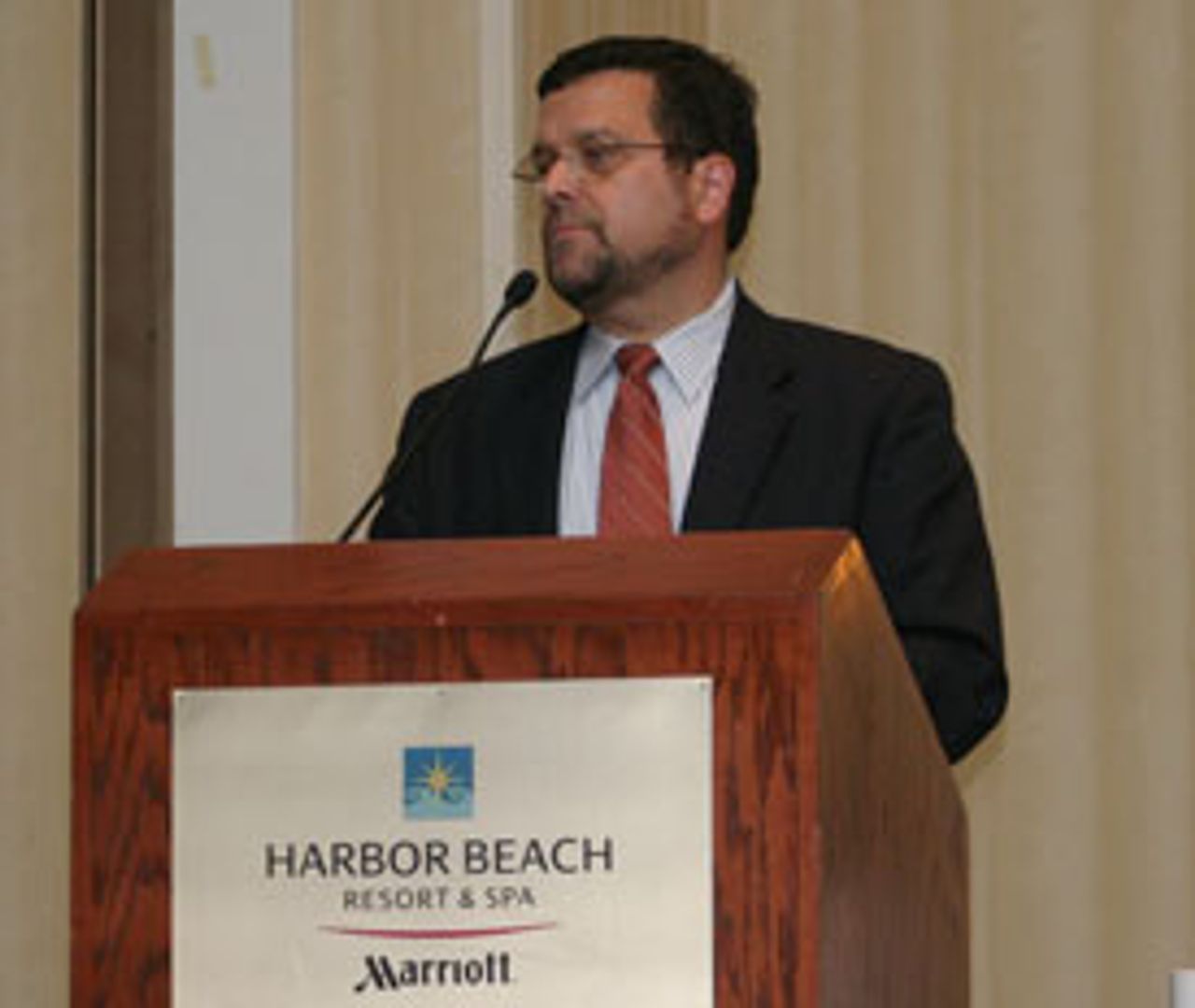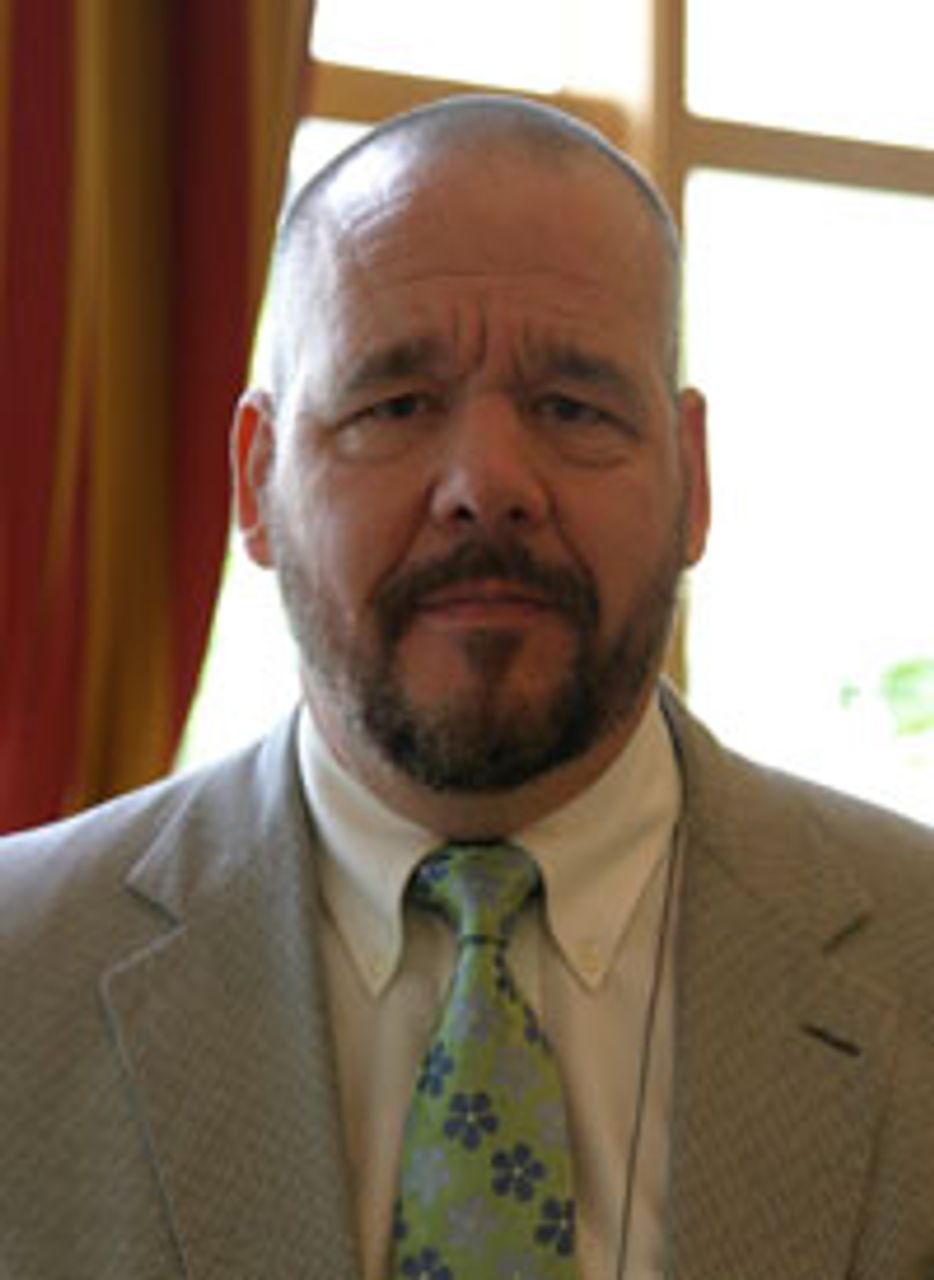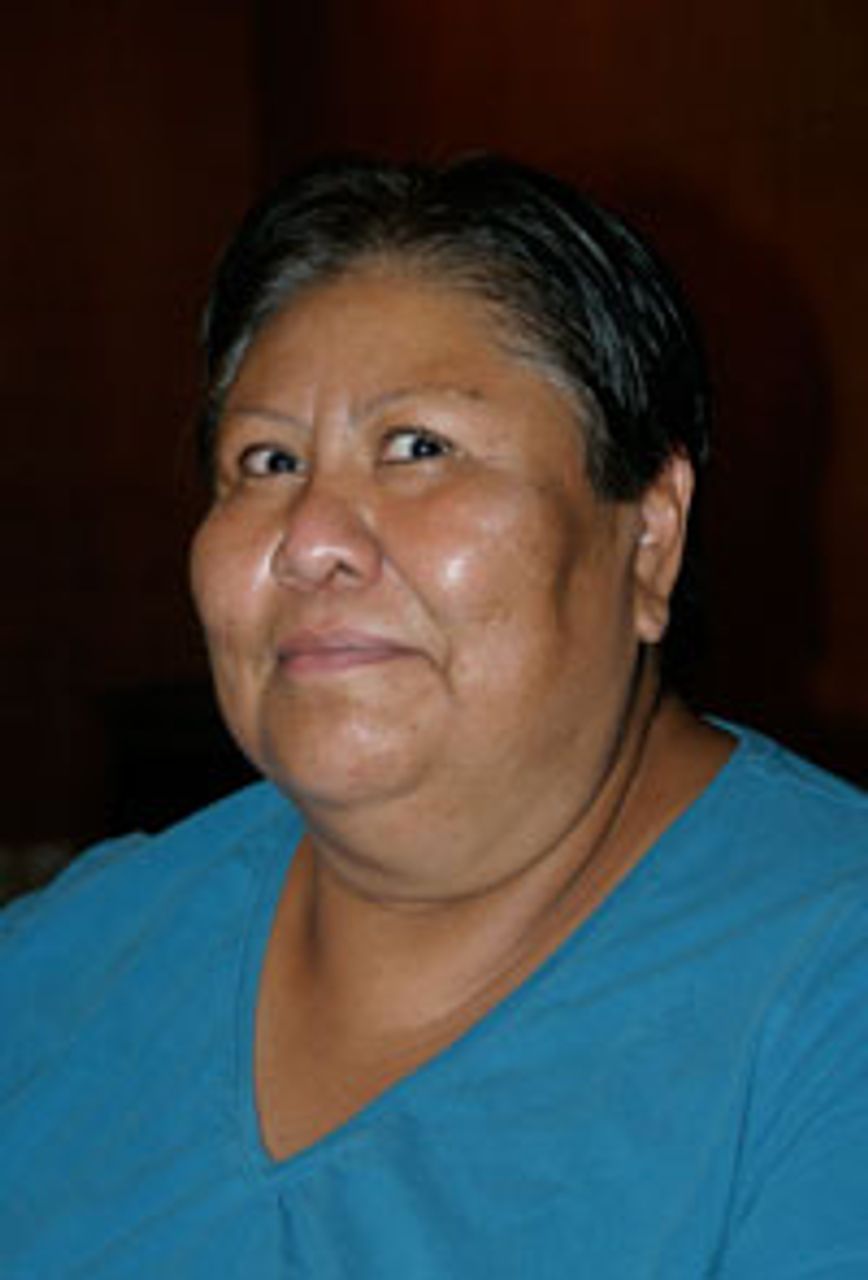 The conference in Ft. Lauderdale
The conference in Ft. LauderdaleThe National Energy and Utility Affordability Conference (NEUAC) was held June 27-29 in Ft. Lauderdale, Florida, amidst the growing utility crisis in the United States. The annual gathering is sponsored by the National Fuel Funds Network (NFFN), consisting of human service organizations as well as utility companies and the National Low Income Energy Consortium (NLIEC), a conglomerate of over 3,000 public and private organizations devoted to low-income utility needs.
Both organizations work with the US government’s Low Income Heating Energy Assistance Program (LIHEAP), which was designed to help low-income individuals or families with utility needs. Although LIHEAP is federally funded, the funds are distributed on a statewide basis through governmental or private organizations. While in the past the federal government has allocated reserve funds for heat waves or other crisis situations, such funding was eliminated in 2010.
With the dramatic rise of unemployment and poverty over the last three years, paying for utilities has become a major challenge to working class families. In the year 2000, 11 percent of the US population, or 32 million people, lived below the official poverty line. By 2009, this rate had jumped to 14.3 percent, or 43.6 million, the highest number in the 51 years the government has been keeping records.
According to an expanded definition of poverty, in January 2011 the US Census Bureau determined that 15.7 percent of Americans—47.8 million people, or one in every 6.5—lived below the official poverty line.
Millions of families are struggling to keep warm in northern states in the winter, cool in southern states in the summer, or keeping power on for critical medical needs all year long. This crisis is compounded by increased energy costs. In 2009, more than 9 million households needed assistance paying their utility bills.
With growing unemployment lines and the official jobless rate standing at 9.2 percent, the need for assistance paying for utilities is expected to grow substantially this year and next. Despite this, the Obama administration is preparing to cut funding assistance by as much as 50 percent from the 2009 level.
Over 600 people attended the NEUAC conference, representing social service organizations from 47 states as well as the District of Columbia. Lectures were given by energy representatives from national and statewide LIHEAP programs, legal experts, specialists in secondary programs to assist impoverished families, as well as utility company representatives.
 Nick St. Angelo
Nick St. AngeloOn the first day of the conference, Nick St. Angelo, director of LIHEAP and a representative of the Obama administration, gave one of the most striking presentations under the session title, “Dialog with Federal Officials.” St. Angelo told the audience that the president was planning painful cuts that had been outlined in the State of the Union address earlier in the year. In many ways, this presentation set the tone for the conference.
“The president has proposed we freeze annual non-security domestic spending for the next five years,” stated St. Angelo, “He acknowledged that to make further progress we have to stop pretending that just cutting discretionary spending would be enough.” St. Angelo later went on to say, “Speaking of 2012, it is proposed that the LIHEAP funding be returned to the level of 2008—$2.5 billion—with $1.89 billion of that for the block grant. This represents a cut of about $2.5 billion from 2010-2011 funding.”
The Obama administration had announced in January 2011 that the funding for LIHEAP would be cut in half for the 2010-11 fiscal year. However, with each stopgap spending measure passed by Congress to keep the government from shutting down, money was also appropriated for the LIHEAP program. As a result, funding came close to reaching the 2009 level; $4.7 billion was appropriated as opposed to $5.1 billion a year earlier. St. Angelo made clear, however, that in the coming year the cuts indicated by Obama would be carried out.
Disturbingly, nearly half of St. Angelo’s report was a veiled threat to those who are alleged to dispense LIHEAP assistance fraudulently. “For the most part things have gone extremely well,” stated St. Angelo. “But as I mentioned, we received a report from the government. The General Accounting Office (GAO) looked at seven states and found that about 11,000 deceased people had received benefits; that incarcerated individuals and employees who did not meet the eligible criteria were able to extract benefits for individuals who did not exist.”
St. Angelo claimed that the Obama administration was placing the program under scrutiny, stating, “As you can imagine, Secretary [Kathleen] Sebelius, HHS [Health and Human Services], Congress and the White House, are all feeling that this can’t be tolerated.” St. Angelo said the GAO found $160 million was “misspent” by LIHEAP.
Such an emphasis on a relatively small sum of money that may or may not have been misspent is not what brought the majority of the attendees to the conference, people who spend every day trying to help those in need. Many delegates came hoping to help those they serve and to find solutions to the social distress in their areas. Some had a very different outlook on the utility crisis than that of the administration representatives.
During the question and answer segment, Morgan Stewart, manager of Entergy Services in Jefferson, Louisiana, asked St. Angelo a pointed question. “We hear again and again about the budget,” stated Stewart, “but what are the social costs of cutting people off LIHEAP?”
He continued, “If someone is cut off from their utilities, and they are on Section 8 [a government housing program] they can also lose their housing. What is the social cost of that decision? Wouldn’t it be better to give that person the money rather than to then have to get the funding for utilities as well as for housing later?”
Stewart later told the WSWS, “I think we should be looking at a different funding model, there should be more guarantees. They never look at the social costs. If you take someone on Section 8 housing off utilities, they get evicted. So, is it cheaper to give them the $300 than all the costs of new housing?”
He said that the cuts in the South would be devastating. “If the cut for 2012 goes into effect, it will hurt the South more than it does the North. The way the funding formula is set up, if the total federal package is less than $2.5 billion, the South will get an overall decreased proportion of the funding.
“More goes for heating states in the North than for air conditioning states in the South. But more people die from too much heat than die from too much cold. You can check that with the CDC (Centers for Disease Control and Prevention). More people die each year from heat strokes than from any other natural disaster.”
Stewart is correct. According to the CDC, 8,015 deaths occurred in the US from heat-related illness between 1979 and 2003. The CDC report states, “During this period, more people in this country died from extreme heat than from hurricanes, lightning, tornadoes, floods, and earthquakes combined. In 2001, 300 deaths were caused by excessive heat exposure.”
Not all of the presentations were from mouthpieces for Obama and the bipartisan budget-cutting establishment. A lecture by Florida lawyer Viletta Coombs dealt with the ways in which “utilities are integral to basic human needs, such as food, shelter, and clothing.” Coombs presented government and historical statistics that proved that “any reduction in funding to social programs has a devastating impact on the increasing number of families that are in their greatest time of need.”
World Socialist Web Site reporters attended several other sessions and spoke to delegates at the conference about the impact of utility problems in different areas of the country. While some repeated the warnings of LIHEAP Director Nick St. Angelo, saying that the main problem was fraud, a number of delegates spoke about the problems low-income people faced in their districts.
Felipe Pinzon of the Hispanic Unity of Florida said, “We provide assistance to low income families in Broward County, but we make sure it is a self-assistance program.
“We don’t want them to stay on the program. We want them to move forward. We want families to get better jobs and to manage their money carefully.” What Pinzon failed to note it that this is under conditions of mass unemployment and poverty.
Pinzon said that to be eligible for SNAP, the federal food stamp program, you couldn’t be more than 130 percent above the official poverty line. One hundred percent is $1,838 for a family of four, which means that income cannot be more than $2,389/month. In addition, the application process, as with all social assistance programs, is complicated and demoralizing.
In response to a question concerning undocumented immigrants, Pinzon said if there is a family of four and the children are legal citizens but the parents are not, that family would only qualify for two people, not four—a paltry $367/month.
The WSWS spoke to Jennifer Lee of the Alabama Department of Economic and Community Affairs, who reviews LIHEAP funding for her state. Lee told us that in Alabama a family can be awarded up to four times for assistance: once in the summer, once in the winter, and twice for emergencies if a member of the family has asthma or something of that nature.
“I have the feeling that LIHEAP will be cut,” she said. “I have been with the state for one year. The funding for the program came with the (federal) stimulus money. In the last year the amount of money available per family increased substantially. Two to three years ago it was $150. Last year it was $350.”
She added, “If the funding is cut, we will have to reduce people to the previous amount, which was $150. Also, it will mean staff cuts. Any agency that is involved in the program would have to make cuts.”
Because of the budget cuts, HHS is demanding more demographic information. With the decreased funding the program is looking to cut off as many people as possible from assistance. But with so many people out of work, the numbers in need keep going up. According to Lee, applications in Alabama jumped to 250,000 households last year. One year earlier it was 150,000.
 John Keeney
John KeeneyJohn Keeney, area project coordinator for the nonprofit Fuel Assistance Program in Massachusetts, told the WSWS about the abundant need in that state. “The major factor is the economy. We have huge unemployment. This area was a manufacturing area and, as you know, manufacturing has gone by the wayside.”
The protections in Massachusetts have been slightly more humane than in some states—at least prior to the current budget proposal going into effect. Keeney said that there is a moratorium on shutoffs from November 15 to March 15, and those who have filed for financial hardship cannot be terminated. In addition, anyone in LIHEAP is automatically in the no-shutoff program, and eligibility for the program was expanded to 200 percent of the poverty rate, or 60 percent of the state median income.
“Expanding the guidelines allowed more working class and middle class people—we should say the working poor—to apply for aid,” said Keeney. “In 2008 there was a 30 percent increase. The area I serve is a mixture of people that includes the very poor. It covers three cities: Gardner, Fitchburg and Leominster. We spent $8.4 million that year. Last year there was an increase from that, and this year, the increase in our district was double the rate for the state—9.2 percent and 4 percent, respectively. We took on 12,500 applications.”
 Essie Amarilla
Essie AmarillaEssie Amarilla of Chama, New Mexico, is a LIHEAP representative in a Native American region. Amarilla said the conditions in the area are difficult for people who live in the mountain areas. “We have FEMA houses that are totally run on electricity. They came out of Arkansas and are not made for the area. People are paying $400-600 a month and they just can’t afford it.”
She said there is often a misconception that Native Americans are swimming in funds because the tribes control casinos. “The tribes are the main employer in the area, but the casinos are not doing well because of high unemployment. They are laying people off.” The official unemployment rate in the region was 12.6 percent in 2010 when the national jobless rate was 5.6 percent.
Amarilla said it is not unusual for extended families to live together. “In many homes there are maybe six people in a house. There are three generations, the grandparents, mother and father and the children.”
 Valería Ramírez
Valería RamírezValería Ramírez connects people to the LIHEAP program in northern California—an area with Native American reservations and other very poor families. She told the WSWS that with the federal cuts, funding in her county would be cut in half.
“The conditions are very difficult,” stated Ramírez. “I am speaking of where I live and I see what is going on—there is such a big need there, a really big need. It’s a wonderful program but the needs are tremendous. But it is like that everywhere.
“Without LIHEAP people in the six counties [in her area] would not get any help. There are senior citizens who literally cannot afford utilities if they lose LIHEAP. They don’t have the money because they are on a fixed income.”
Ramírez said the demand in her region has jumped more than 50 percent. Last year she was handling 25 applications a day. “And I thought that was hard,” she said. “Now, I do 30-40 a day.”
